I’m often asked ‘do you do the herb walks all year round?’. The answer is ‘yes’. There are plants around us all year, we’ll simply see different things as the seasons progress. Those who’ve attended our spring and summertime walks will know there can be more around than we’re able to talk about, we have to be selective then. In winter it’s more detective than selective. Walking in seeking mode, noticing. While much of nature slumbers, the seasonal highlights stand out all the more.
The inbetween months can be can be a bit of mixed bag, especially as our climate becomes muddled – we’re even less sure of what to expect (plants-wise or weather-wise!) – nature always holds some surprises.

We’ve explored a lot of green spaces around Cam and Dursley in our year of herb walks, but so far have not ventured into the quiet green spaces around our churches. These are carefully managed spaces, designed as resting places, and encouraging contemplation. A place to come and be still. Which is something plants do very well, making them very good company in these spaces.
Inspired by a long cherished book ‘Wildlife in the Churchyard’ by Francessca Greenoak (good name for a plantswoman!), which confirms that plants are as much part of the history of these sites as the church itself, we decided to explore the churchyard of St George’s in Upper Cam.
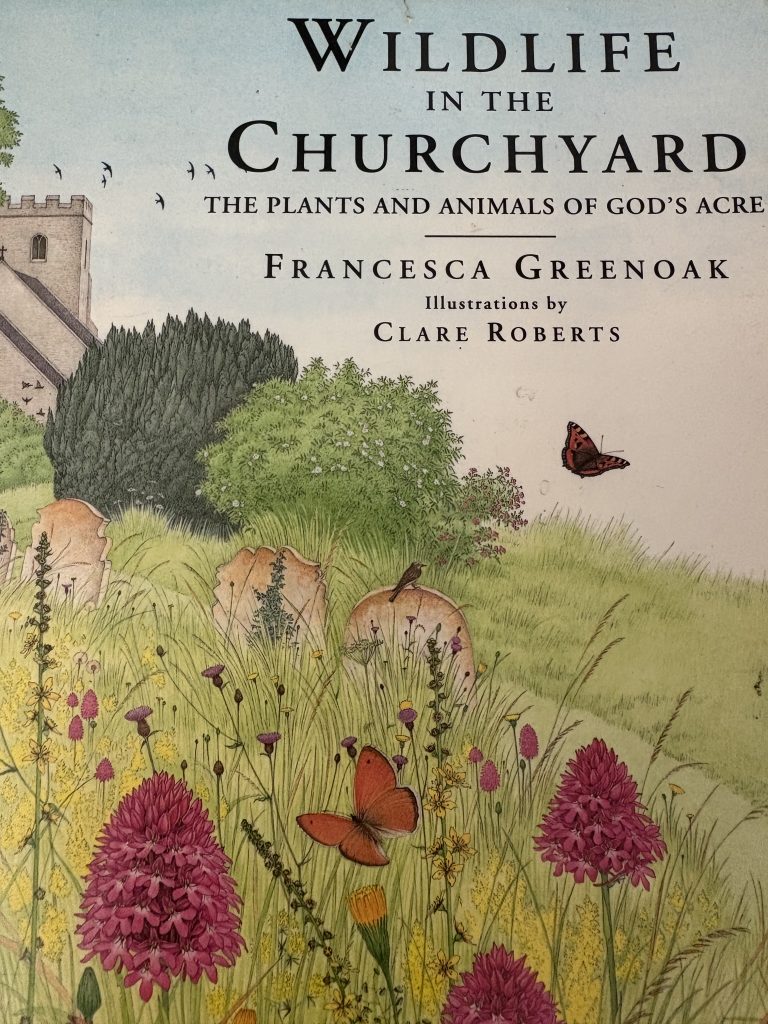
Richard Mabey writes in the Foreword of the book:
‘Chuchyards are among the most powerful symbols of shelter in our culture … sanctuaries for the living as well as for the dead.’
In churchyards we get a blend of planted species; meadow species when grassland areas have been kept wild; hedgerow species around the borders; woodland species in shady areas; and garden or hybridised species resulting from grave flowers, or church floristry.
Purposeful plants
The plants of the churchyard could be as much a resource for worshippers as a contemplative green background to the comings and goings of the congregation. Traditionally more meadow than garden, certain areas of a churchyard would be cultivated for specific purpose. Planting would be focused on providing the flowers and greenery used to decorate the church at particular seasons, feast days and festivals. These might include:
- Box and willow palm on Palm Sunday
- Garlands of roses and woodruff for Corpus Christi
- Roses on St Martin’s Day
- Birch at Midsummer
- Holly and Ivy at Christmas
It was the latter of these that were most evident at St George’s. However, visit here at Eastertime, and a cross of crocuses planted many years ago will still appear in the grass. Snowdrops are another hidden treasure, traditionally only brought indoors to place on the altar for Candlemas celebrations.
Among the more formal planting in St George’s there are roses, phlox, golden rod, foxgloves, nigella, hydrangeas, poppies, ceanothus and, happily Michaelmas daisies. These are named because they flower as we celebrate St Michael, on his feast day of Michaelmas, the traditional close of summer and move into the darker days of the year. Our walk on the 4th October was just a few days after Michaelmas Day, 29th September.

Ubiquitous herbs
A survey of churchyards some years ago found there was just one species of plant that appeared ubiquitously. First guesses might think this was the daisy, so common in all our lawns, or maybe the dandelion, an ever-present ‘weed’. The plant we often overlook, however, is plantain. This was the species that appeared without fail. It was appropriate, therefore, that it was one of the first plants we stopped to take notice of at St George’s.
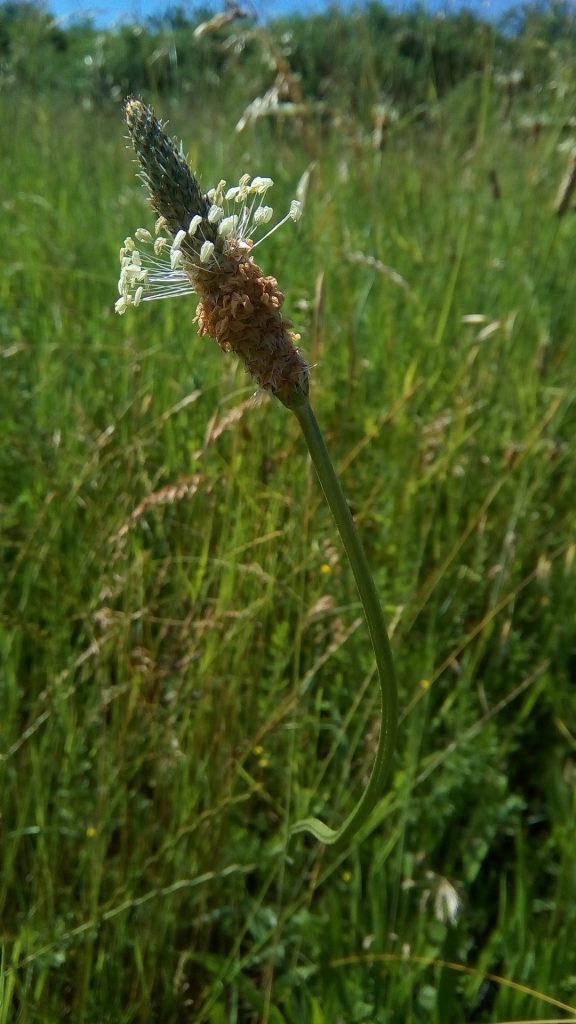
Plantain is a wonderfully helpful herb, and completely safe to use externally on wounds, insect bites, rashes, sores and the like. It will help stop bleeding, lessen itching and reduce infection. If using in the wild, it’s best to chew the leaf and then apply where needed. If gathering for use later, do so gently, trying not to bruise the leaves. Bruised leaves will blacken on drying, they’re fine to use but it’s pleasanter to have delicately handled, unbruised leaves retaining their greenness. These can be used to infuse oils with the plant’s healing power to then make salves or balms, or they can be blended in a herbal tea, a good option for a healthy, daily cuppa.
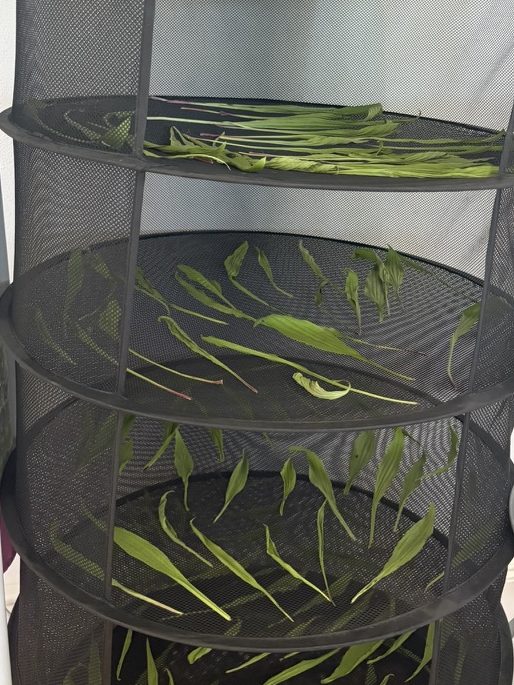
Fragrant graves
Stepping from the main path to examine the old stone graves of the churchyard, we were drawn to one fragrant example. A mass of mint. Though mint has a reputation for spreading wild, this seemed neatly contained within the one grave here; another mint-covered grave was found later in a different part of the church yard. This, we reckoned, was spearmint – the common garden mint. It is milder and sweeter in flavour than the more firey peppermint, which came about as a cross between watermint and spearmint. Alongside these standard mints there are lots of different varieties such as apple mint, chocolate mint, ginger mint, pineapple mint and even strawberry mint.
Taller plants edged the churchyard, providing a background to the graves. These included evening primrose, still with her yellow flowers open wide. Later in the day these would close, looking a little ragged, until the sun setting would encourage them to open up again and release her scent. Teasles were here too, a common sight, most probably a relic of our cloth-making history. Great willowherb with it’s tall stems now topped with fluffy seedheads, which a few weeks before would have been Barbie-pink flowers.
Nature layers herself beautifully, the plants supporting each other, finding their own niche. Here the mid-layer included ferns and sedges. Then down to the more ground-hugging plants like starry blue flowers of laurentia and periwinkle, the pink froth of seedums and the familiar tooth-edged leaves of dandelion.
Trees for life
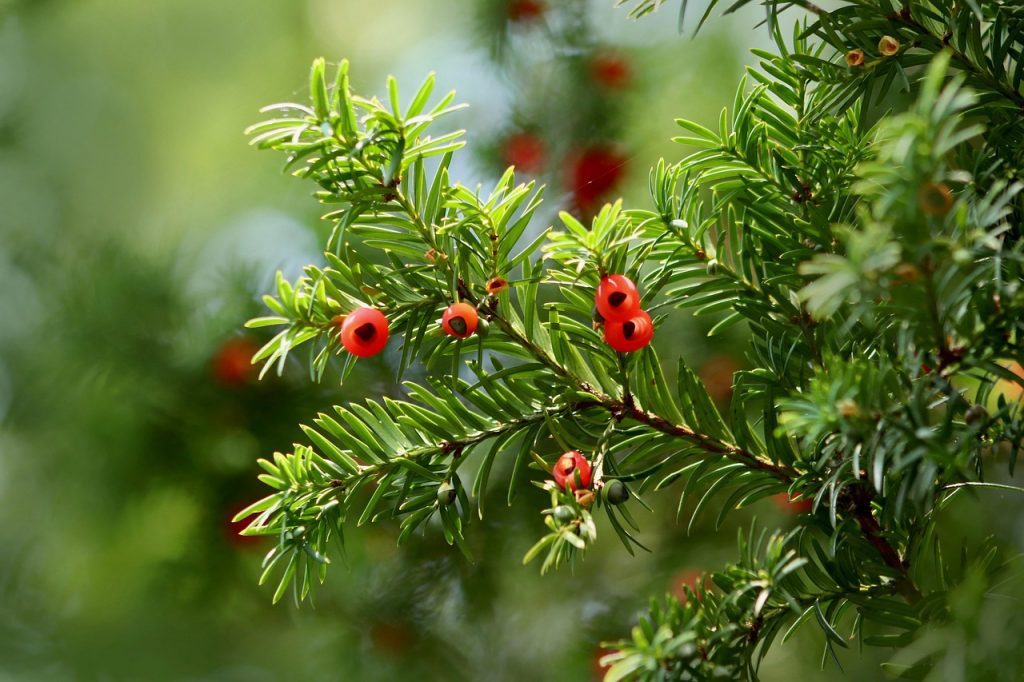
Trees create the atmosphere of a churchyard. It’s rare to find a church yard without a yew tree, often the yews will pre-date the church as they have long been looked upon as symbols of ongoing life and thereby formed part of religious ceremonies back to pre-Christian times. The one here is full of red berries, indicating she is a female tree. These berries contain a poisonous seed. As often in nature, the potency of what can poison, may also offer up remedies that cure. Extracts from yew have proved important in creating some of our modern cancer treatments.
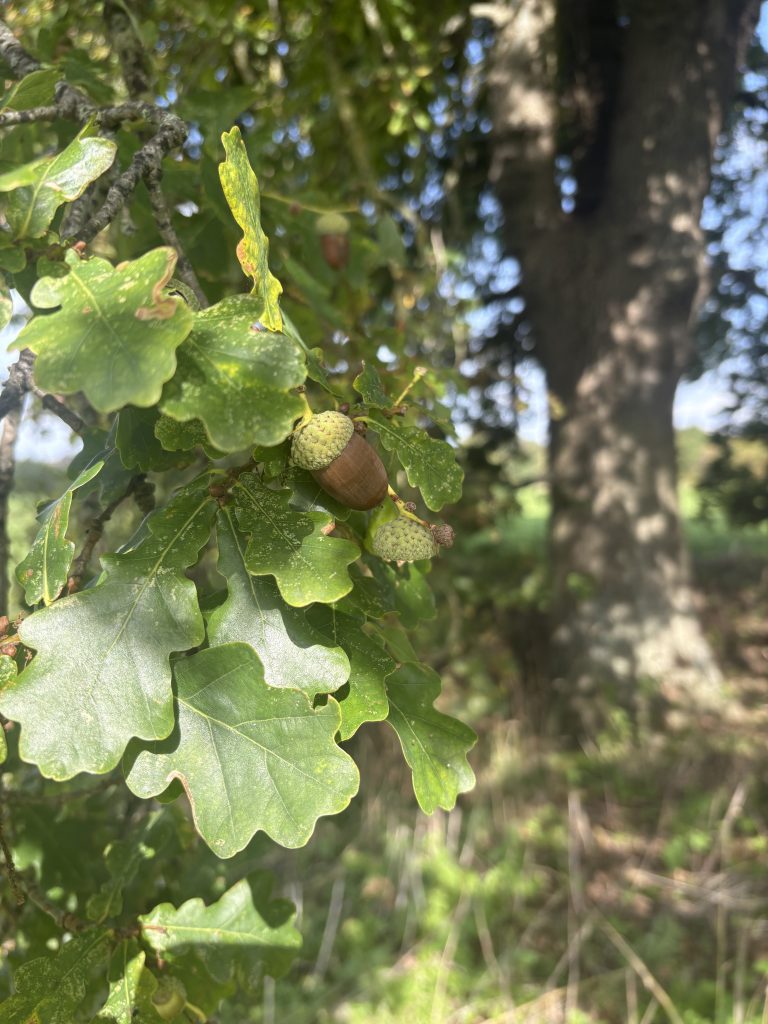
Although not in the churchyard itself, a massive oak makes its presence known through a scattering of acorns. Huge cups and seeds are plentiful at our feet. This autumn is considered a ‘mast year’, when many of our fruit and seed bearing trees have over-produced. This may be an indication of a harsh winter to come, nature is providing in readiness; or it may be showing us the stress these trees are under, they’re putting all they can into reproduction because they fear their time may be short.

Which brings us round to the grand horse chestnut that stands at the back of the churchyard, the lesser-visited spot. Her branches reach out over Hopton Road, so you may have found some of her conkers on the ground there, shining brightly. Gather these and treasure them. Although many generations have happy stories of conker fights – whether fairly won or otherwise – and traditionally folk have benefitted from the abundant saponins in conkers which make a great liquid soap when chopped and boiled, these will sadly become things of the past. Our horse chestnuts have come under attack from an invader, the miner moth. It’s a subtle thing, receiving much less attention than ash die back but is actually more worrisome in that it will affect absolutely every horse chestnut. The moth causes the leaves to brown meaning they cannot photosynthesise, gradually weakening the tree. Enjoy your conkers and the sight of magnificent horse chestnut trees while you can.

But we’re not ones to end the walk on a low note. We had been joined on the walk by Chris who volunteers with Glorious Cotswolds Grasslands. He had generously brought packets of seeds for each walk participant. What a joy to be able to sow our local, native seeds as we enter the darkest part of the year, knowing they hold the potential to create a beautiful patch of summer meadow. The symbolism of the seed allows us to recognise our need for some quiet, contemplative time, that will enable us to flourish and bloom in coming months.
Churchyards are a great place to go for quiet. They provide sanctuary for plants and wildlife, as much as for people. Mind you, there’s always some quiet activity going on. Our walk crossed paths with the ‘Cam and Dursley graveyards’ walk that happened on the same morning as part of the Dursley Walking Festival!
A final thought – churches are a repository for local records: registers of marriages, burials and deaths, old parish maps, church warden’s accounts, architectural alterations. Alongside this, a record of the nature within the churchyard holds much insight into the place and its people.
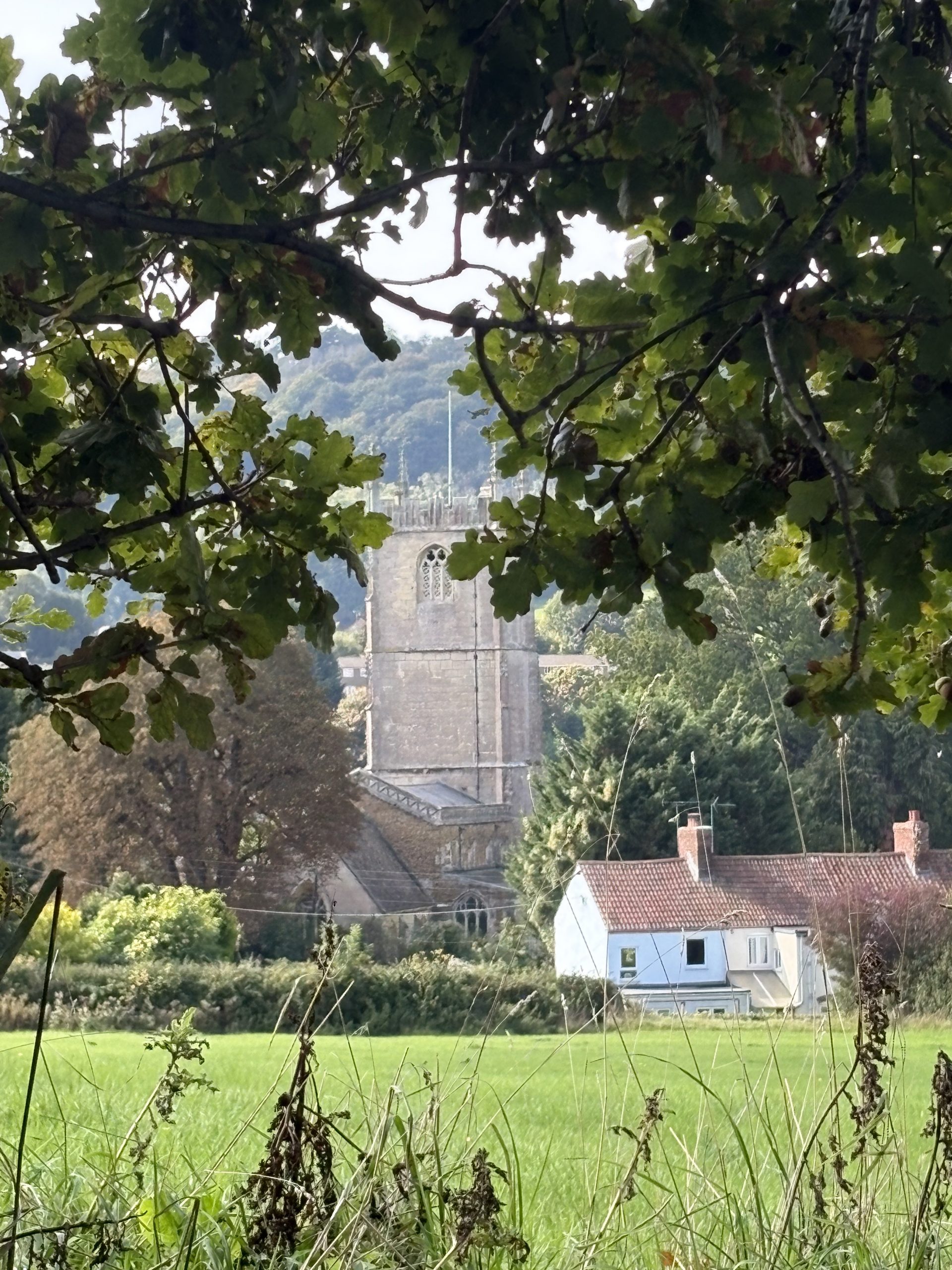
Leave a Reply to Laura P Cancel reply